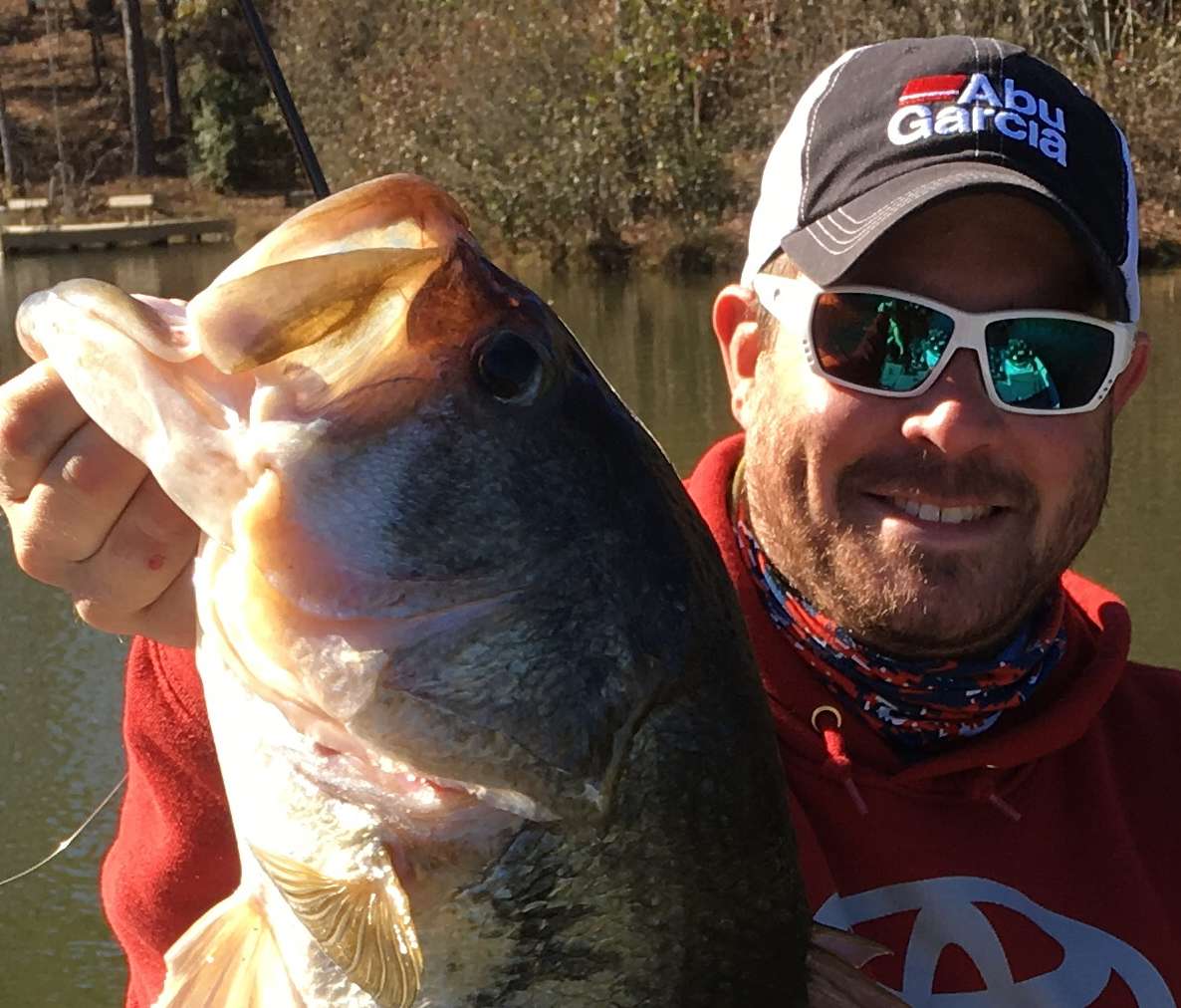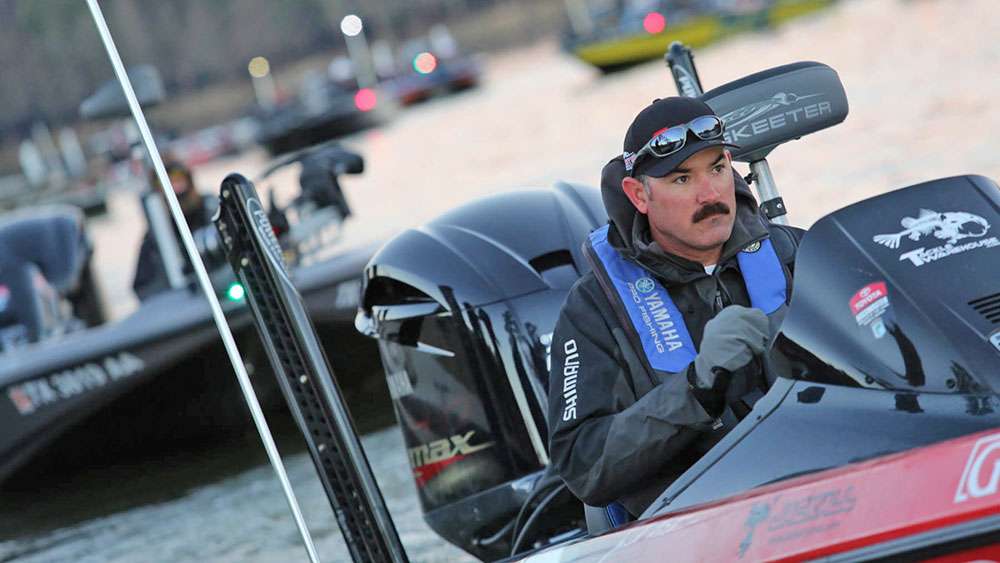
As the days get shorter and temperatures become more comfortable, conditions are better suited for both anglers and bass. With impending winter weather, the fish begin to feed heavily to build fat stores in order to better endure the forthcoming cold-water conditions. And, that fact alone makes for some tremendous fall fishing opportunities.
Just because the bass are in full-on feeding mode doesn’t mean they’ll be easy to catch. Having said that, most bass fanatics worth their salt would likely agree that fall — next to spring — is your best shot at a true trophy-caliber fish.
California native and 5-time Bassmaster Classic qualifier Jared Lintner knows some of the best fishing of the year is to be had during the fall. No matter where your home waters are, he believes some of the biggest bass of the year can be fooled by a myriad of presentations matched with the right gear.
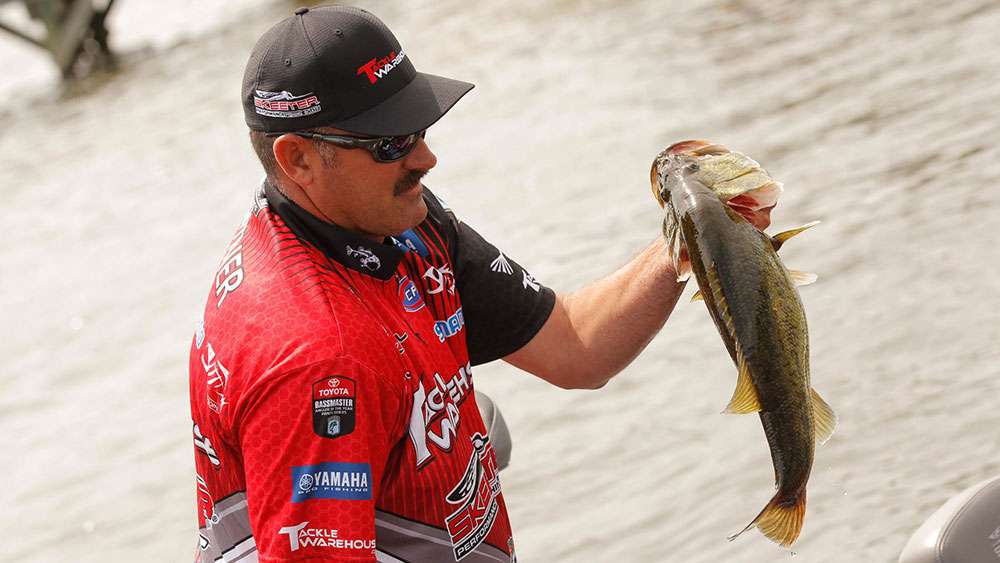
The fall transition
“The same fall-fishing applications that I use at home in California work just as well, if not better, on many of the nation’s top bass fisheries,” Lintner said. “The key is understanding seasonal movements that will position bass in specific locations as the water begins to cool off — and those locations will be largely dictated by the presence of baitfish.”
The Arroyo Grande, Calif., resident said the early part of October is when water temperatures begin to cool, which will pull baitfish into the back of creeks. Naturally, the bass will follow.
“I love to catch bass on topwater, and fall is a great time for that,” he said. “As the baitfish migrate, there is a natural die-off that occurs, and dead or dying baitfish often end up on the surface. It’s also worth noting that bass will corral baitfish in shallow water ‘feed up’, which creates action on the surface. You really can’t beat fall topwater in my opinion.”
The transition from main-lake structure to the creeks doesn’t happen overnight, he said, but as the migration takes place it’s important to check creek mouths, secondary points and creek channels as you move back. Once you locate the bass, replicating a pattern elsewhere during the fall is very easy.
“Water temperature is everything. When I fish California’s famed Clear Lake, or even Guntersville for that matter, I really like fishing water that is mid to upper 50s,” he said. “When the water drops below 60 degrees the fish know it’s time to strap the feedbag on, and for my money that turns into some of the finest fishing of the year.”
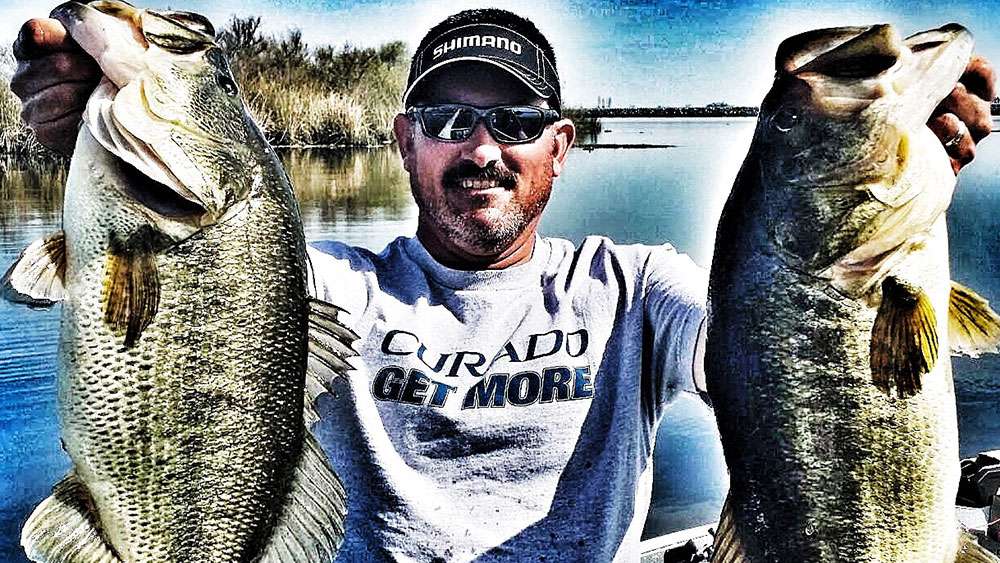
The approach
“There are two ways I love to catch fish in the fall,” Lintner explained. “The first is with a Jackall TN70 lipless crankbait and the other is with a Jackall Bowstick 130, which is a walk-the-dog style topwater. Both presentations are able to be fished quickly to cover a lot of water looking for active biters.”
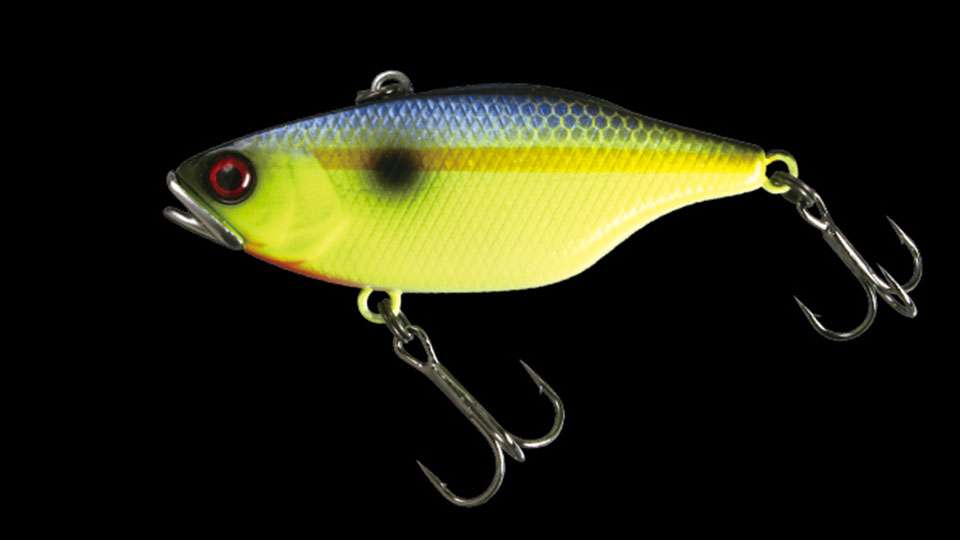
Lintner likes these presentations because the bass are feeding heavily and they are more willing to chase moving baits — plus they best represent fall forage. Typically, bass group up into large schools during the fall and when you bump into one fish with either bait, there will be numbers of additional bass in the immediate vicinity. That means to fish each location thoroughly.
“In grass lakes such as Clear Lake, Guntersville and Chickamauga, all the grass begins to die when the water temps drop,” he said. “Once the grass has really disappeared, you’re left with small clumps of isolated vegetation, and the fish will set up and feed on and around those locations. Those two presentations I just mentioned work especially well in this scenario because they effectively cover the two primary feeding locations — surface and near the base of weed clumps.
“If I only had two lures to fish with across the country during October and November, it would be those two — by far.”
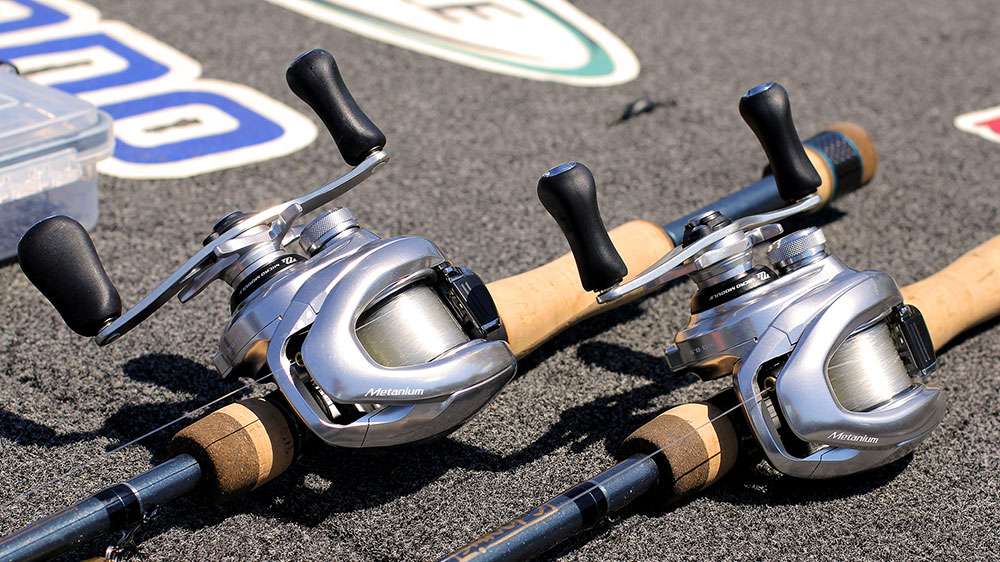
The gear
The right rod-and-reel combination is critical to being effective with each presentation, and Lintner stands behind his Shimano/Loomis combinations.
“When I’m using the Bowstick I prefer a Shimano Metanium 150XG MGL with an 8.5:1 gear ratio that allows you to cover water quickly. The reel is supersmooth and can cast a mile,” he explained. “When fishing an aggressive topwater bait, long casts are absolutely essential.”
The rod that Lintner partners with the Metanium is a G. Loomis GLX 893 JWR, which is a 7-foot, 5-inch medium-heavy baitcasting rod that he said produces long, accurate casts, yet has the backbone to handle long-distance hook sets.
“It’s strong enough to drive the hooks home, yet with a soft tip to keep the angler from ripping the hooks out of the fish’s mouth.
“When I’m fishing with the Jackall TN70, I prefer a G. Loomis 7-foot IMX 844 Mag Bass Rod paired with a Shimano Curado 70XG in a 8.2:1 gear ratio. I really like the low profile because of how well it fits in my hand; how you can burn a bait back to the boat or work it slowly. And I like the comfort it provides when pulling cranks all day long.
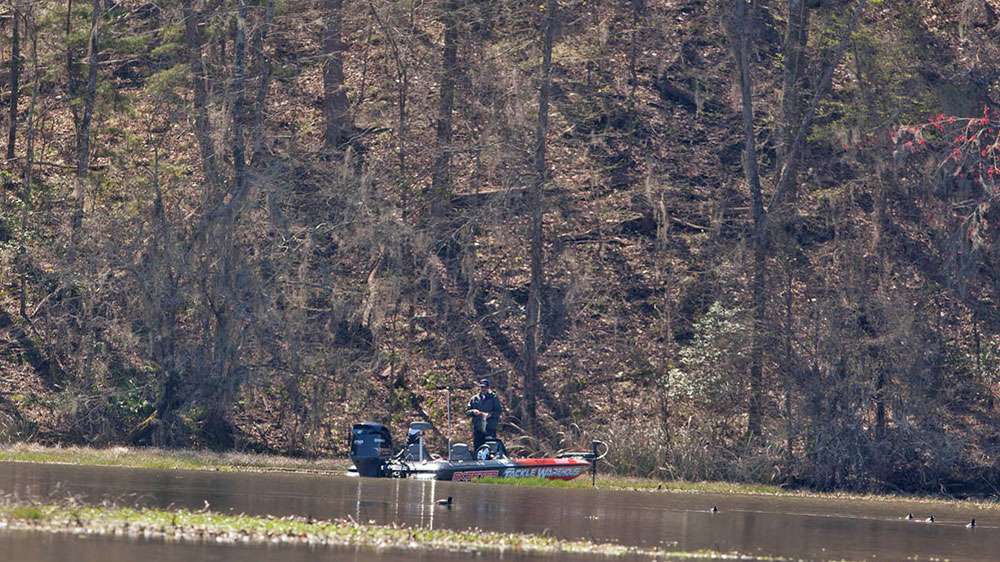
Overcoming a difficult fall scenario
“Yes, the fishing can be amazing in the fall, but like any other time of the year anglers will be faced with difficult conditions,” Lintner said. “As the bass move from their summertime haunts, finding them as they make this transition can be a tough nut to crack. Usually the first place they stage will be near secondary points inside primary creeks.”
Lintner believes that loud, attention-grabbing presentations such as topwaters and crankbaits are effective search lures. Once a few fish have shown themselves, slow down and pick apart the structure until you isolate the school’s specific location.
“A drop shot is hard to beat if you need to slow down,” he said. “I’ll locate remaining grass and work the edges, but if grass is hard to come by, I’ll look for hard objects like stumps, docks and big rocks and boulders. You’ll find fish doing that, but stay flexible, and as we always like to say let the fish tell you what they like.”
In Lintner’s experience, a fall cold front only makes the fishing better as opposed to how a spring system will literally shut the fishing down. In fact, he claims the stronger the weather change in the fall, the better the bite can be.
“In the past, I had been practicing for a tournament on Clear Lake in comfortable 70-degree weather, and a day later snow was falling. The fishing was just lights out!”
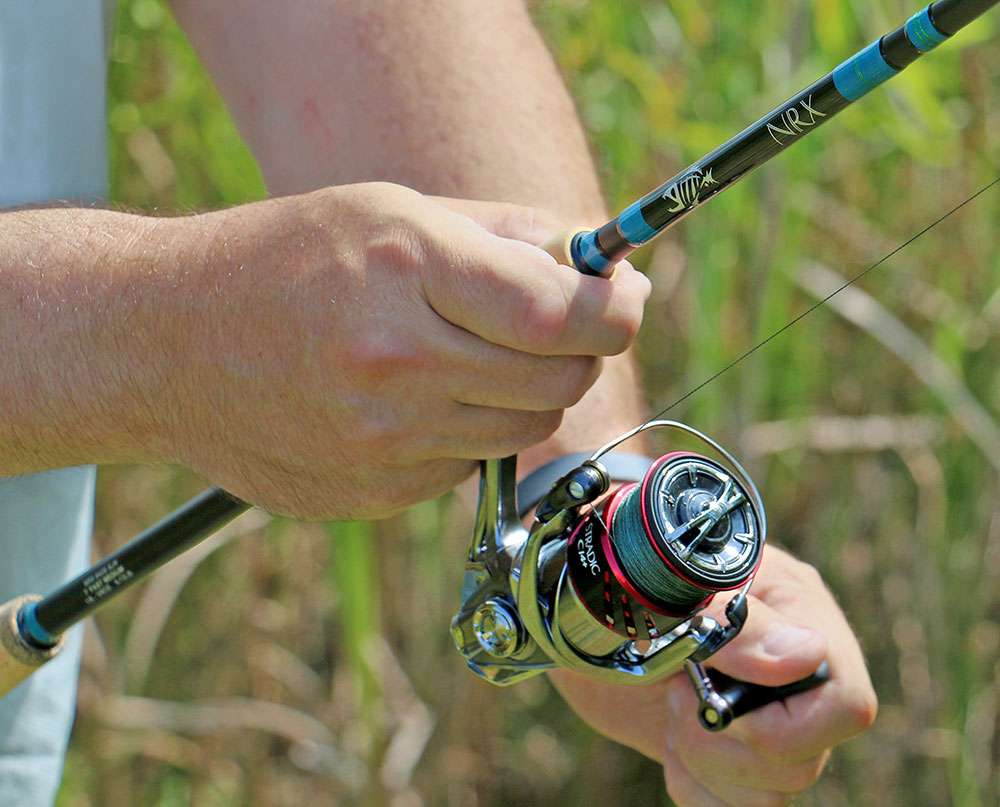
His explanation? Lintner said a fall cold front forces the fish to eat because it signifies winter is on the way, and their natural instinct is to feed in preparation of the forthcoming cold water.
When drop shotting in the fall, Lintner prefers a G. Loomis NRX 842 Drop Shot rod paired with a new Shimano Stradic CI4+ 2500 size spinning reel loaded with anything from 6- to 12-pound test line, depending on the size of fish you might be targeting. He also said a 4- to 6-inch Texas rigged worm that best matches the forage base in your lake is best, typically in a shad pattern.
“What makes a great spinning reel is the drag system,” he continued. “Like we discussed, fall is the time to target trophy-caliber fish, and when you tangle with giants having a forgiving reel could mean the difference between a broken heart and fulfilling your dreams. The drag system in the CI4+ is incomparable; highly adjustable, strong and reliable.”

